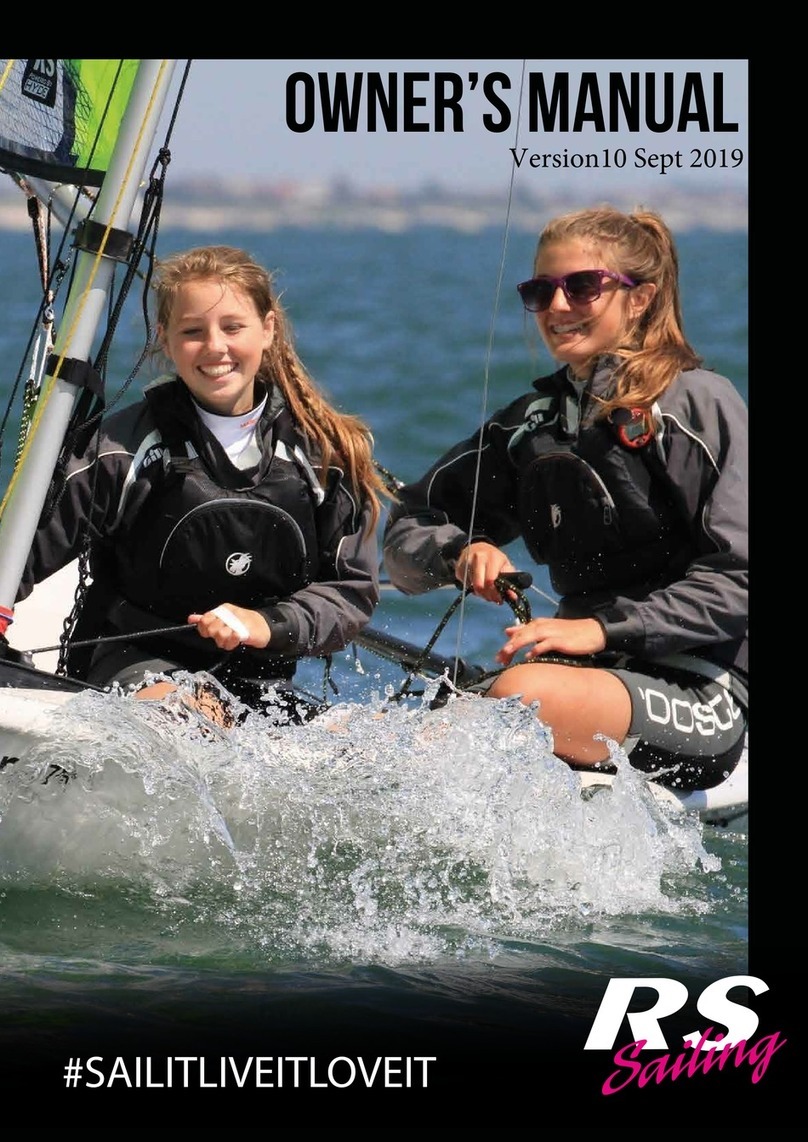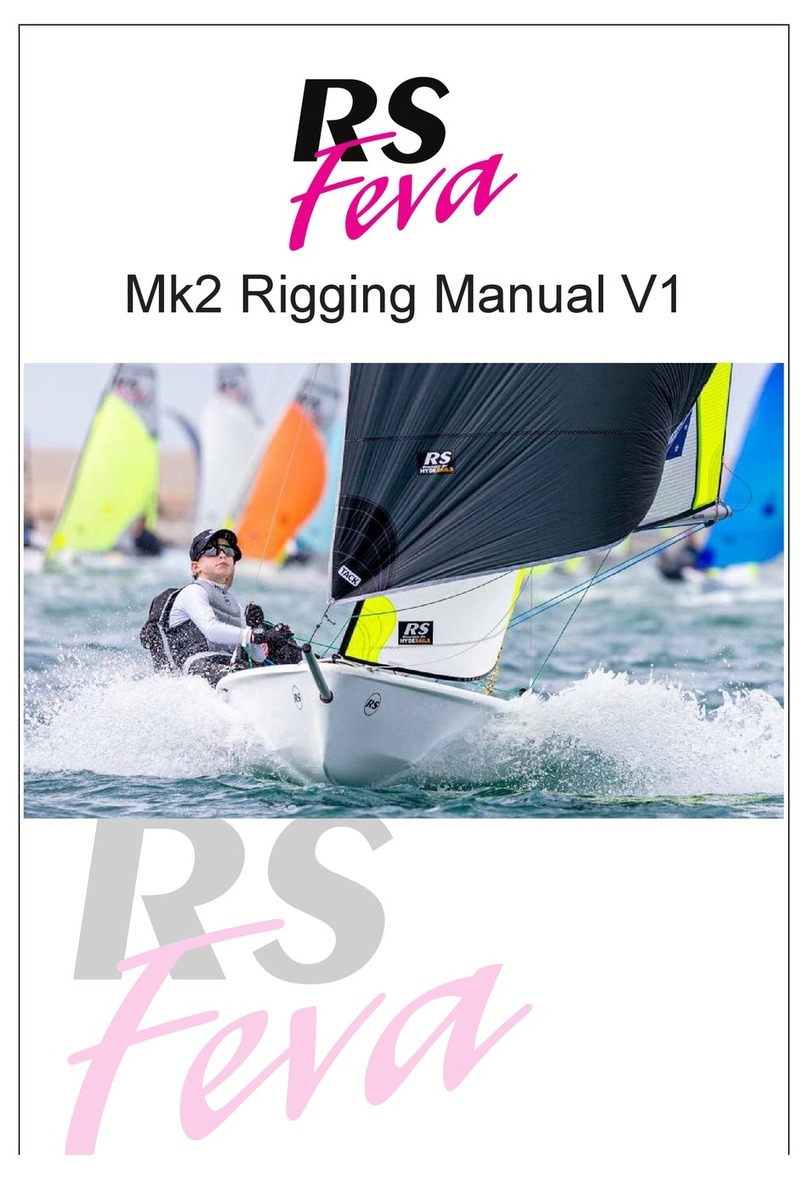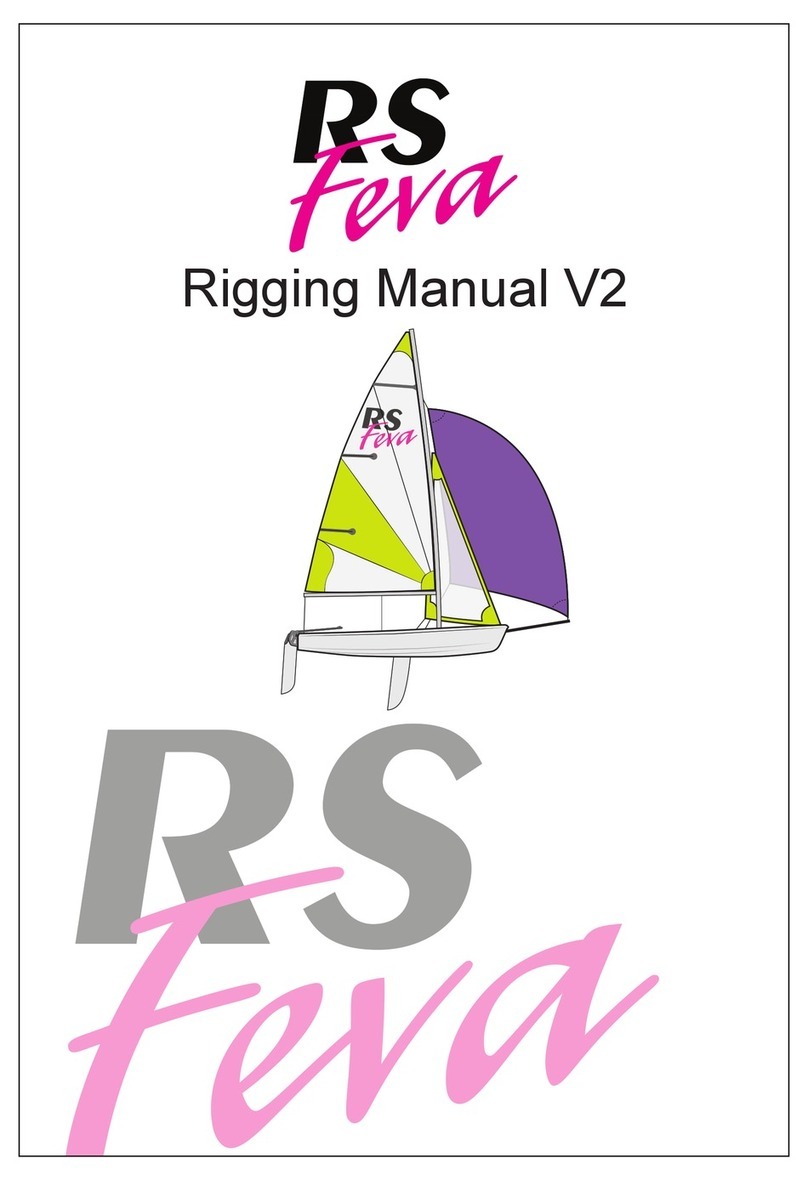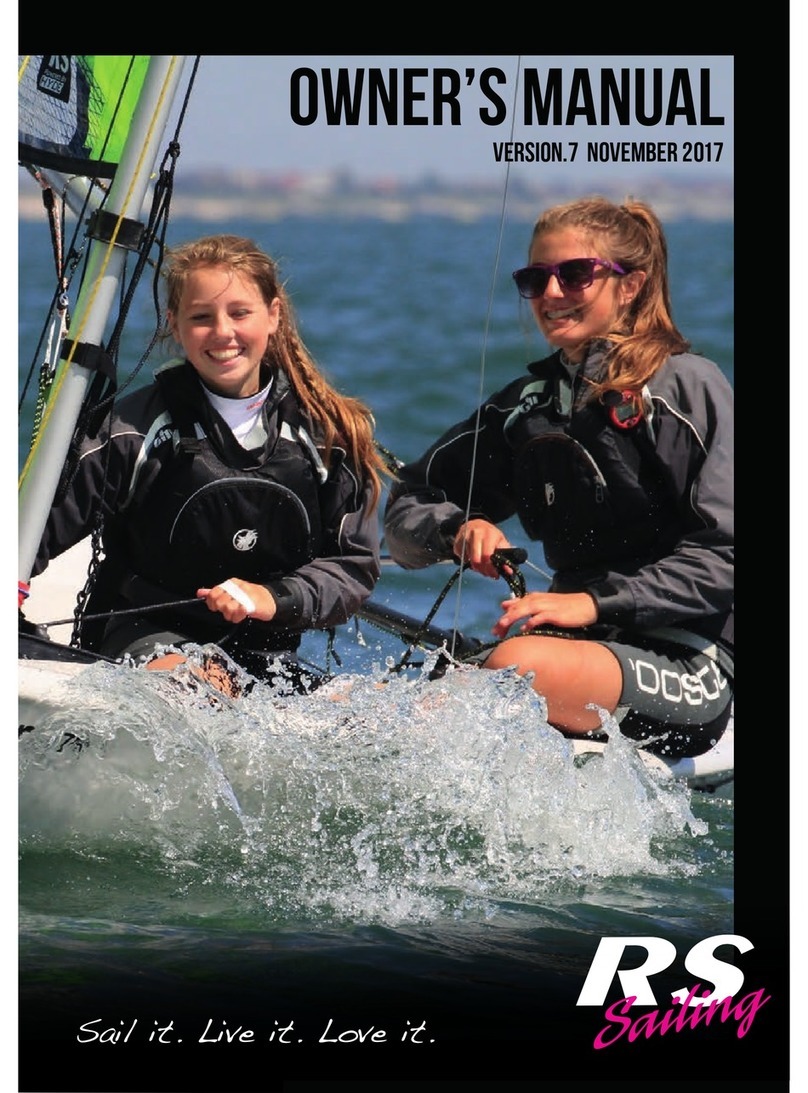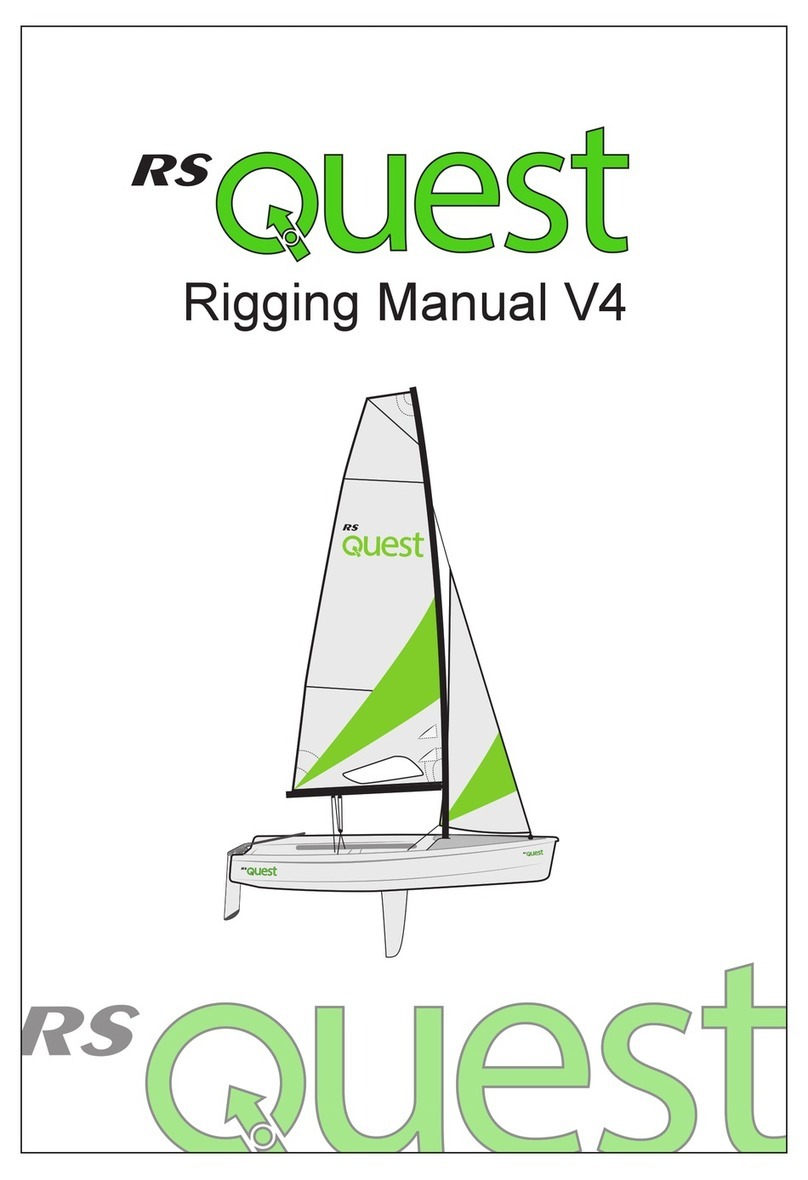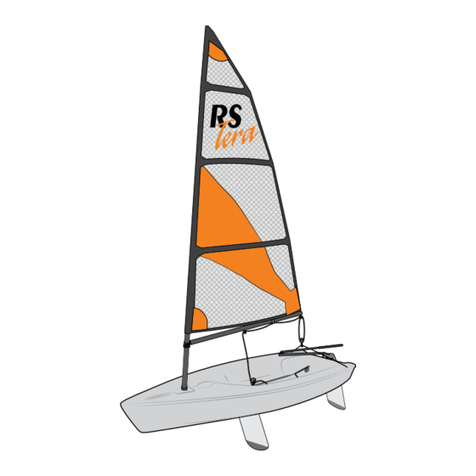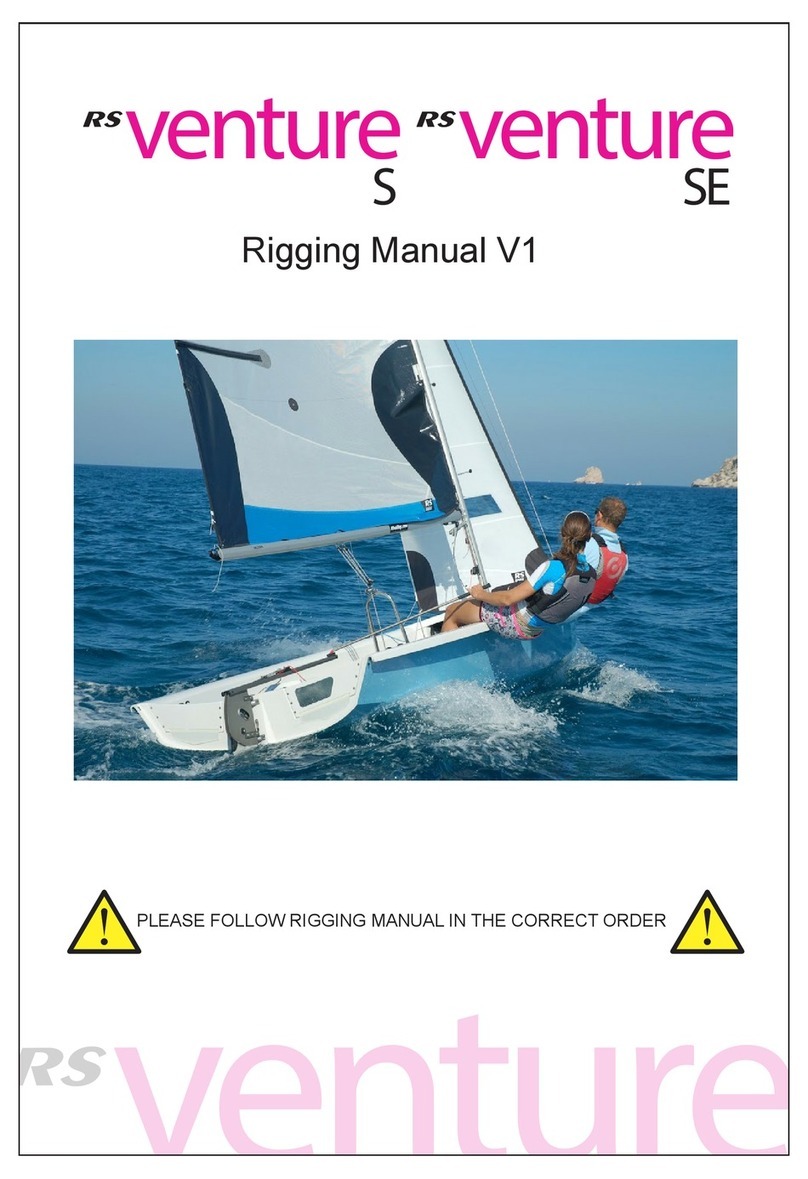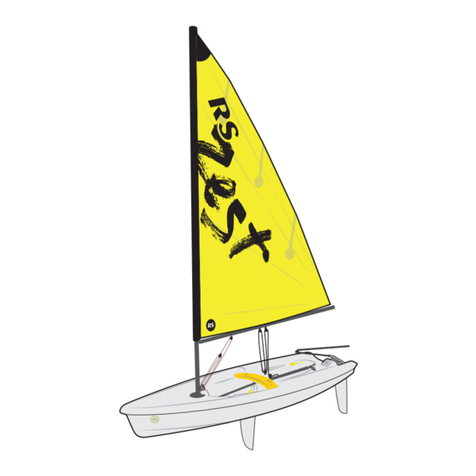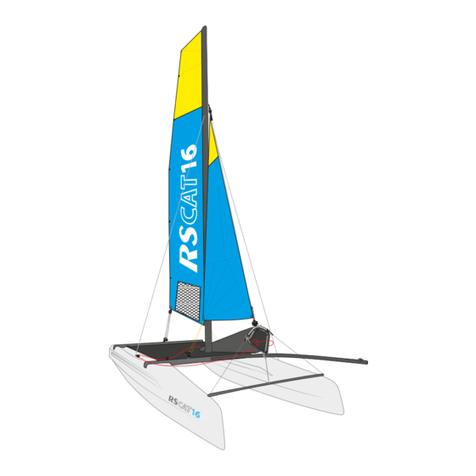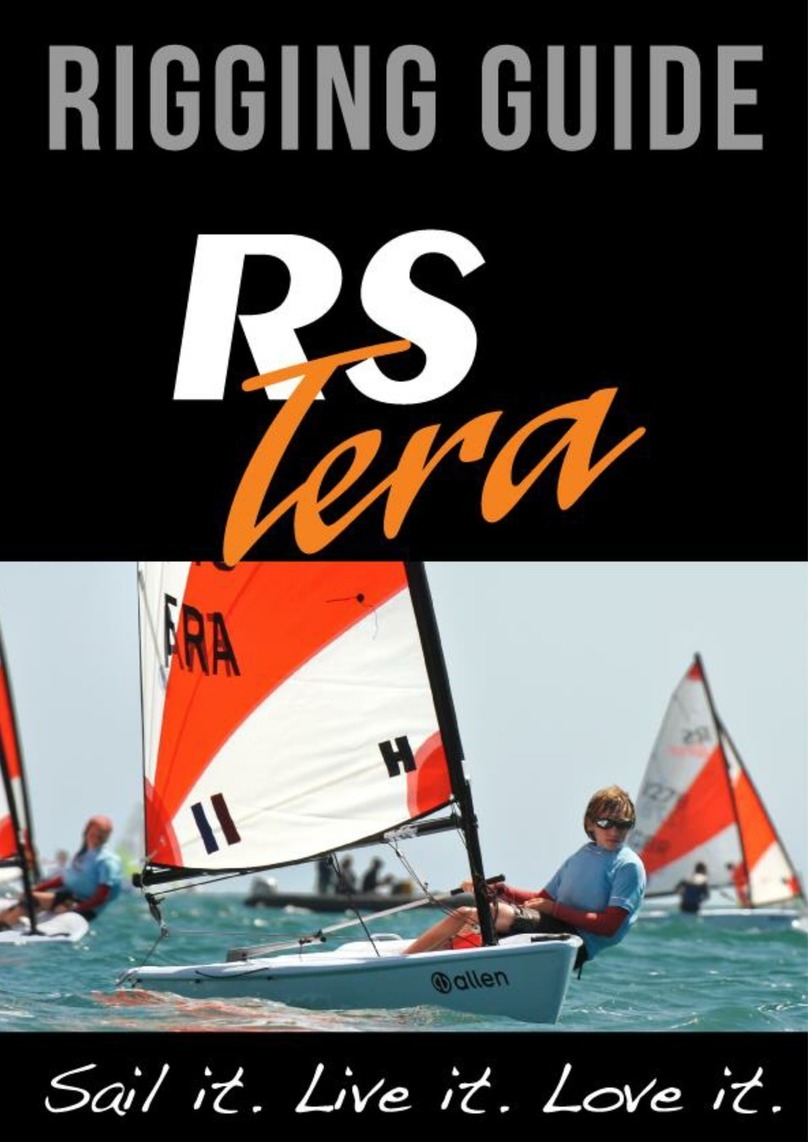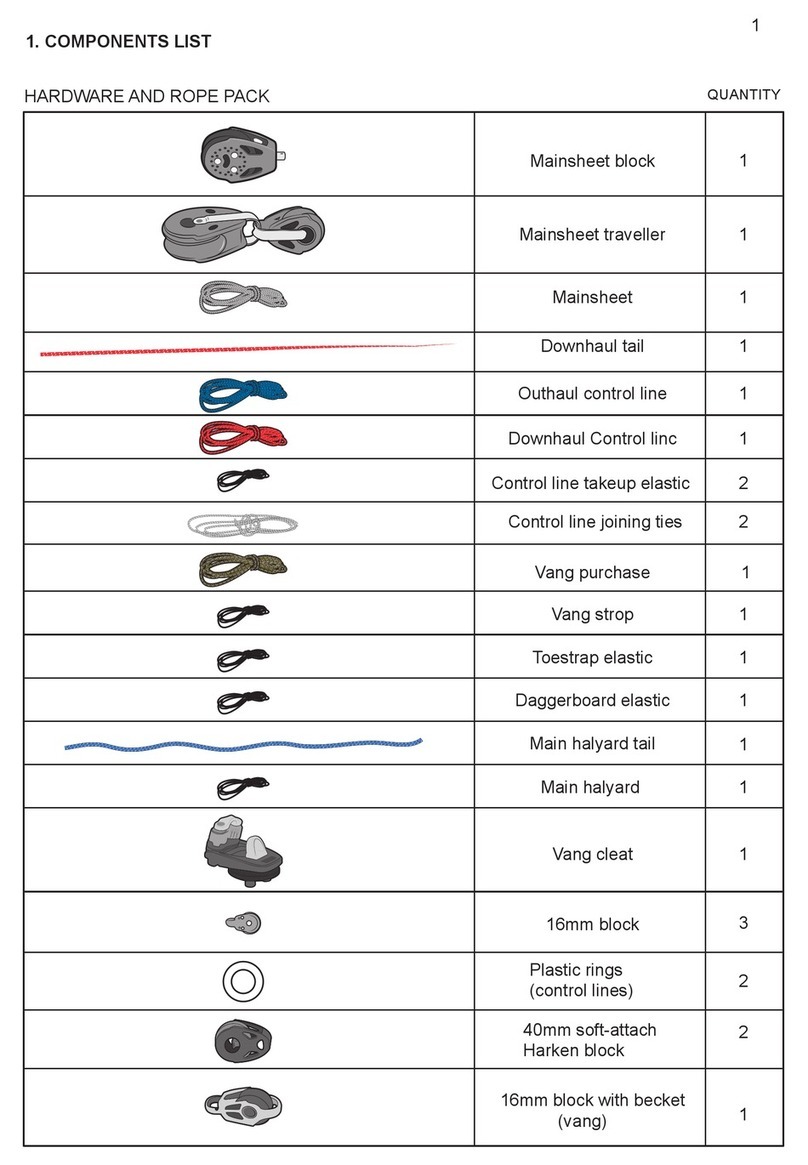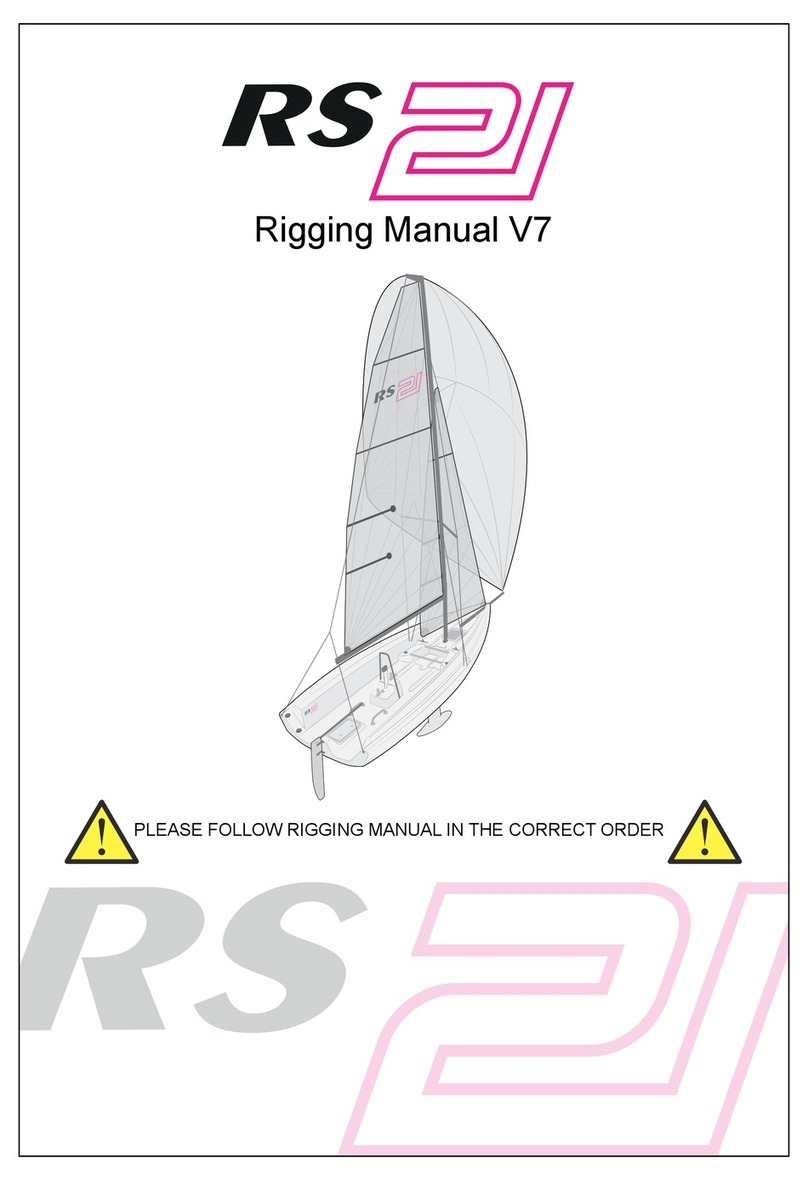It is important that the three control lines are rigged correctly to ensure that the outhaul, vang and
cunningham systems function correctly, and there is not any unnecessary damage to the hardware.
The top cleat with a fairlead is for the kicker line (supplied BLACK). The line runs through the block mounted
on the vertical surface and through the block attached to the kicker bobbin lines. The line then runs through
the double block on the boom, using the side closest to the gooseneck. Run the line back to the opposite
bobbin block, and trace the same route over the other side of the boat.
The middle cleat is for the cunningham (supplied SILVER). The line runs through the outer pair of floor
mounted blocks, through the upper sail cringle (not the reefing point cringle unless reefing the sail), down to
the unused side of the double block on the boom, and back up through the sail cringle. The line then exits in
reverse of the above.
The bottom cleat is for the outhaul (supplied BLUE). Use the remaining floor mounted blocks, up to the block
on the exposed line from the boom, and back down to the floor block.
The control lines tie off on the lacing eye inboard from the gunwale, back from the cleats.
TUNNING AND SAILING TIPS
The RS300 has a uniquely adjustable rig. It is possible tochange the sail shape from full andpowerful to board
flat in the top half, with all stages in between. We have spent many hours perfecting the control in the RS300’s
mast and sail combination. It is well worth spending some time ashore and afloat to experiment with the rig
and discover how to use the control available. Remember, with a boat like the RS300, control of the rig is
fundamentally important not only to boat speed, but also ease of handling.
Once you have rigged the boat and hoisted the sail, assuming the wind is not too strong, tie the boat
securely to the trolley and turn the bow slightly away from the wind. You can now sheet the sail inand look
at the effect tension on the vang and cunningham make to the sail shape.
The vang is the all-important control on this boat. In all conditions the vang provides the majority of the leech
tension. You need never attempt to sheet the boom in to the centreline – in most wind strengths it will be best
sheeted so that the aft end is over the leeward corner of the transom.
Sheet the boom to this point and then try pulling on the vang progressively harder. You will see the mast
bend, the vertical crease in the sail just behind the mast disappears and then the sail gets flatter until it is
almost completely flat in the top section. Now try pulling on the cunningham control. This will remove the
horizontal creases behind the mast. Whereas with many modern fully battened rigs, the cunningham is
largely used to bend the mast and depower the rig, on the RS300 it is the vang which performs most of this
task.
Even in light winds you should use enough vang tension to pre-bend the mast and take out the sail’s fullness
near the luff. In strong winds, not only does the vang bend the mast and depower the rig, but it also stops the
rig bending forward at the top, causing boat handling problems when sailing off-wind. If in doubt– crank it on!
Having experimented with the rig on shore, you are now ready to launch the boat. Pick a day when the wind is
not too strong because an unfamiliar boat is always more demanding than your previous dinghy! It is a lot
more fun to go out and learn on your first sail, rather than go out to survive.
Launching
Wheel the boat into the water and float it off the trolley.
Turn the boat slightly away from head to wind. Stand in the water, on the windward side of the boat, near the
front of the wing. Hole the gunwhale with your aft hand and insert the daggerboard into the slot with the other
hand. Ensure that it is correctly positioned through the shock cord retainer in the slot.Release the rope which
holds the shock cord open. Push the daggerboard half way down.
It is easiest to climb over the stern when setting off. Ensure that the mainsheet is freed right off and turn

